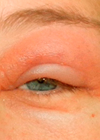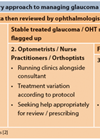Optometry archive for 2018
Developing community eye care: the GOS package in Scotland
In the second in the series about community eye care in the home nations, Janet Pooley explains how Scotland has developed its services within GOS. The United Kingdom has devolved healthcare; the powers were transferred from Westminster to Scotland and...
Flashes and floaters in community optometry – diagnosing a posterior vitreous detachment
Managing patients who attend a practice with symptoms of flashes and floaters is a regular occurrence in community optometric practice. It’s often very distressing for patients; symptoms can be quite dramatic and an internet search can indicate imminent blindness from...
Patient safety – is this achieved in optometry with CET?
Collecting points and ticking boxes – as we come to the end of another three year cycle of continuing education and training (CET), the rush to ensure that everything has been completed on the myGOC (General Optical Council) dashboard feels...
Treating minor eye conditions in optometry practices: is this a viable model for the future?
The role of the optometrist has expanded in recent years as community eye care services have changed. With the limited scope of general ophthalmic services (GOS) regulations in most parts of the UK, the funding to support additional care has...
Leadership and management in optometry: why is it important?
The General Medical Council recognises that leadership and management is essential for every doctor, and provides guidance detailing management and leadership responsibilities [1]. Indeed, management and leadership is part of the core training for all medical trainees. However, to date,...
Glaucoma care provision using a multidisciplinary approach: a personal view
This article is going to explain the secret to running an efficient multidisciplinary glaucoma service which will comfortably meet the demands of an ever-growing elderly population, within the confines of budgetary and clinical constraints, wherever the setting. This may be...









